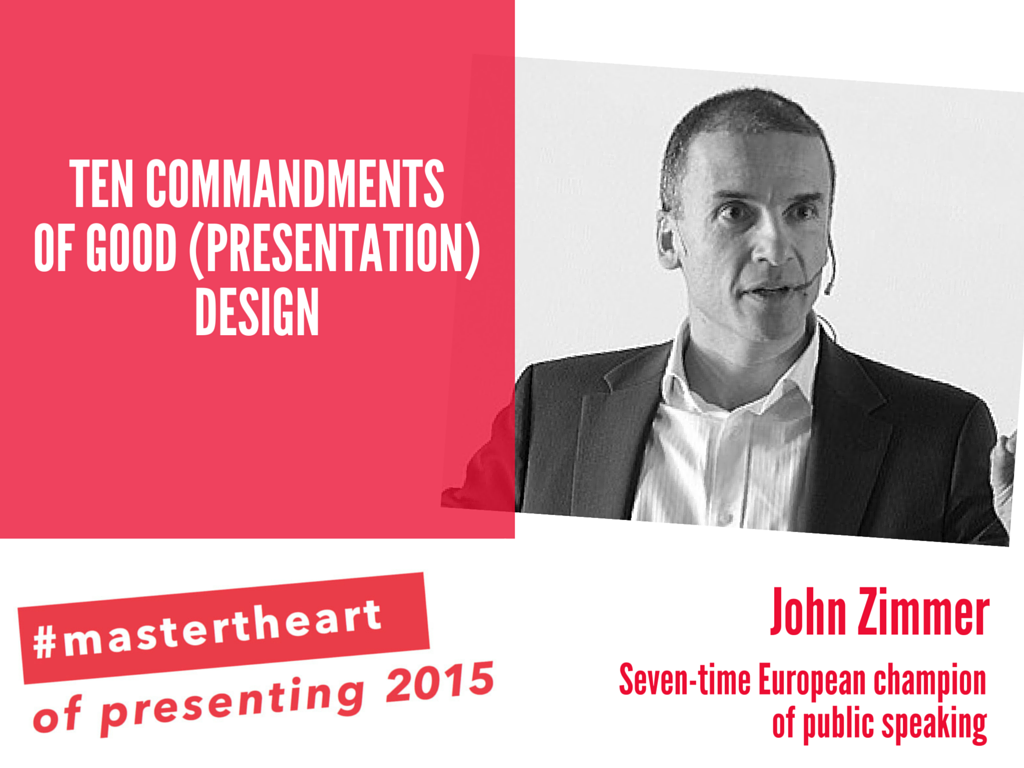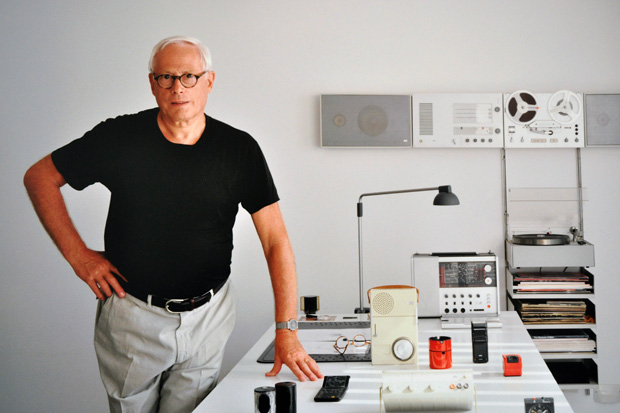This is a quest post by a public speaker and coach John Zimmer. John is an internationally recognized professional speaker and expert on public speaking, presentation skills, interpersonal communication and persuasion.
John is a 7-time European champion of Toastmasters public speaking contests. He is regularly invited to speak at events across the world. John also writes a popular blog about public speaking – mannerofspeaking.org – which is followed by readers around the world and which, in 2014, was selected by Prezi as one of the Top 100 online resources for presentations.

The Ten Commandments of Good Design
Dieter Rams is a German industrial designer who has been recognized as one of the most influential industrial designers of the 20th century. He worked for 40 years at the German consumer products company, Braun. Today, he works at Vitsœ, a British furniture company that manufactures and sells products designed by Rams.

According to Vitsœ’s website, in the early 1980’s, as he became increasingly aware of his influence in the world, Rams began asking himself a fundamental question: “Is my design good design?”
Realizing that it’s not easy to measure design in any definitive way, Rams decided to set out the principles which he attempted to follow in his work. The result is the list below which is frequently referred to as the “Ten Commandments of Good Design”.
Although Rams developed these principles in the context of his work as a designer of consumer products, we should reflect on them when it comes to designing our presentations, with or without PowerPoint.
1. Good design is innovative.
The possibilities for innovation are not, by any means, exhausted. Technological development is always offering new opportunities for innovative design. But innovative design always develops in tandem with innovative technology, and can never be an end in itself.
2. Good design makes a product useful.
A product is bought to be used. It has to satisfy certain criteria, not only functional, but also psychological and aesthetic. Good design emphasizes the usefulness of a product whilst disregarding anything that could possibly detract from it.
3. Good design is aesthetic.
The aesthetic quality of a product is integral to its usefulness because products we use every day affect our person and our well-being. But only well-executed objects can be beautiful.
4. Good design makes a product understandable.
It clarifies the product’s structure. Better still, it can make the product talk. At best, it is selfexplanatory.
5. Good design is unobtrusive.
Products fulfilling a purpose are like tools. They are neither decorative objects nor works of art. Their design should therefore be both neutral and restrained, to leave room for the user’s selfexpression.
6. Good design is honest.
It does not make a product more innovative, powerful or valuable than it really is. It does not attempt to manipulate the consumer with promises that cannot be kept.
7. Good design is long-lasting.
It avoids being fashionable and therefore never appears antiquated. Unlike fashionable design, it lasts many years – even in today’s throwaway society.
8. Good design is thorough down to the last detail.
Nothing must be arbitrary or left to chance. Care and accuracy in the design process show respect towards the user.
9. Good design is environmentally-friendly.
Design makes an important contribution to the preservation of the environment. It conserves resources and minimizes physical and visual pollution throughout the lifecycle of the product.
10. Good design is as little design as possible.
Less, but better – because it concentrates on the essential aspects, and the products are not burdened with non-essentials. Back to purity, back to simplicity.
Most, if not all, of Rams’ principles are directly relevant. I particularly like the 10th one. I am a big believer in the importance of simplicity and Rams’s advice is spot-on: Concentrate on what is essential and dispense with everything that is not. In fact, Rams has described his approach to design with the phrase “Weniger, aber besser“, which in English means “Less, but more”.
